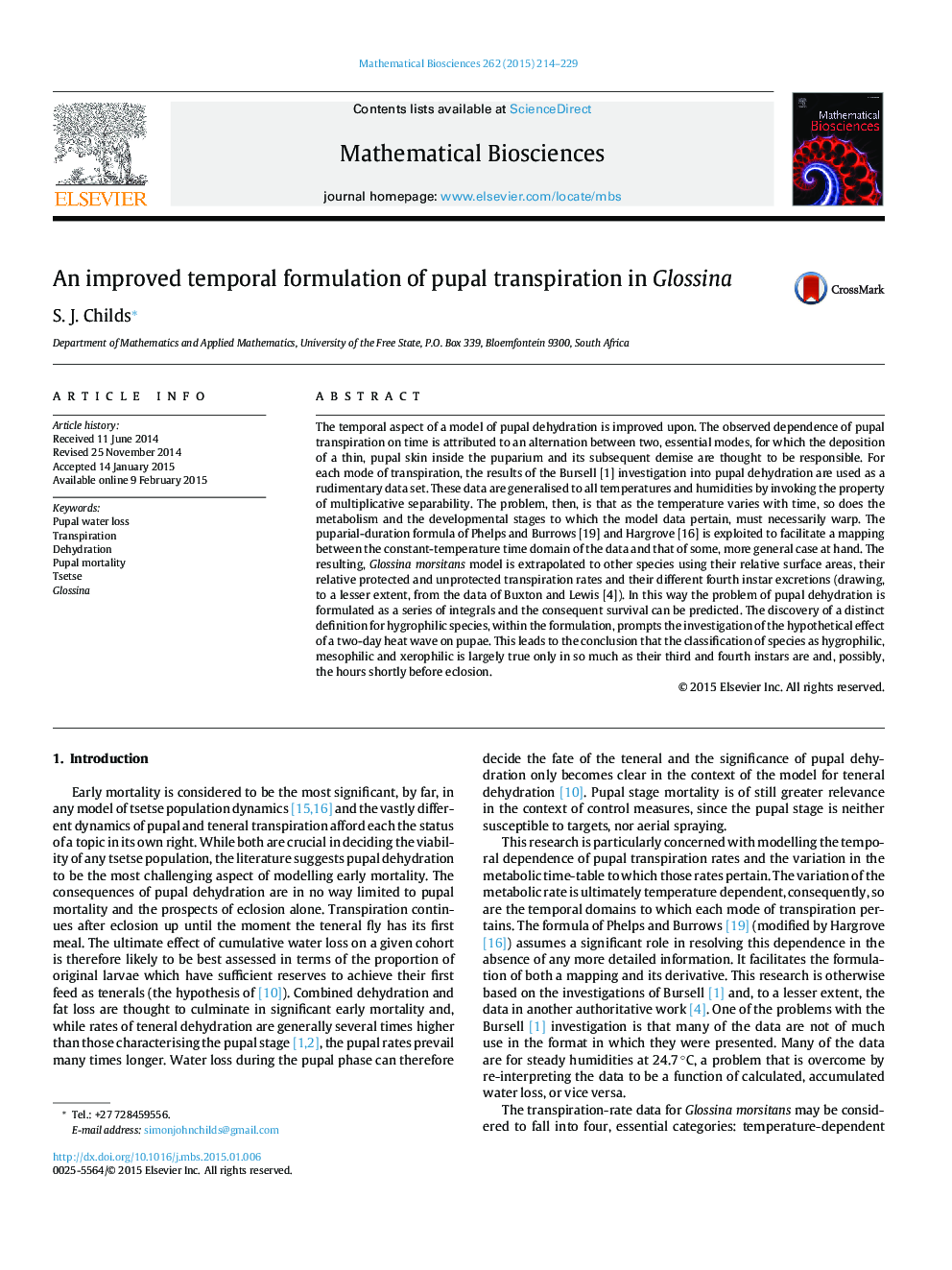| Article ID | Journal | Published Year | Pages | File Type |
|---|---|---|---|---|
| 4499995 | Mathematical Biosciences | 2015 | 16 Pages |
•A series of integrals for the calculation of pupal water loss and consequent survival.•The interpretation and visualization of the Bursell [1] data.•The hypothetical effect of a two-day heat wave to elucidate the classification of species.•The third and fourth instars determine the hygrophilic classification.•Habitat assessment.
The temporal aspect of a model of pupal dehydration is improved upon. The observed dependence of pupal transpiration on time is attributed to an alternation between two, essential modes, for which the deposition of a thin, pupal skin inside the puparium and its subsequent demise are thought to be responsible. For each mode of transpiration, the results of the Bursell [1] investigation into pupal dehydration are used as a rudimentary data set. These data are generalised to all temperatures and humidities by invoking the property of multiplicative separability. The problem, then, is that as the temperature varies with time, so does the metabolism and the developmental stages to which the model data pertain, must necessarily warp. The puparial-duration formula of Phelps and Burrows [19] and Hargrove [16] is exploited to facilitate a mapping between the constant-temperature time domain of the data and that of some, more general case at hand. The resulting, Glossina morsitans model is extrapolated to other species using their relative surface areas, their relative protected and unprotected transpiration rates and their different fourth instar excretions (drawing, to a lesser extent, from the data of Buxton and Lewis [4]). In this way the problem of pupal dehydration is formulated as a series of integrals and the consequent survival can be predicted. The discovery of a distinct definition for hygrophilic species, within the formulation, prompts the investigation of the hypothetical effect of a two-day heat wave on pupae. This leads to the conclusion that the classification of species as hygrophilic, mesophilic and xerophilic is largely true only in so much as their third and fourth instars are and, possibly, the hours shortly before eclosion.
Graphical abstractThe temporal aspect of a pupal-water-loss model is improved on. The problem of pupal dehydration is then formulated as a series of integrals and the consequent survival predicted.Figure optionsDownload full-size imageDownload as PowerPoint slide
